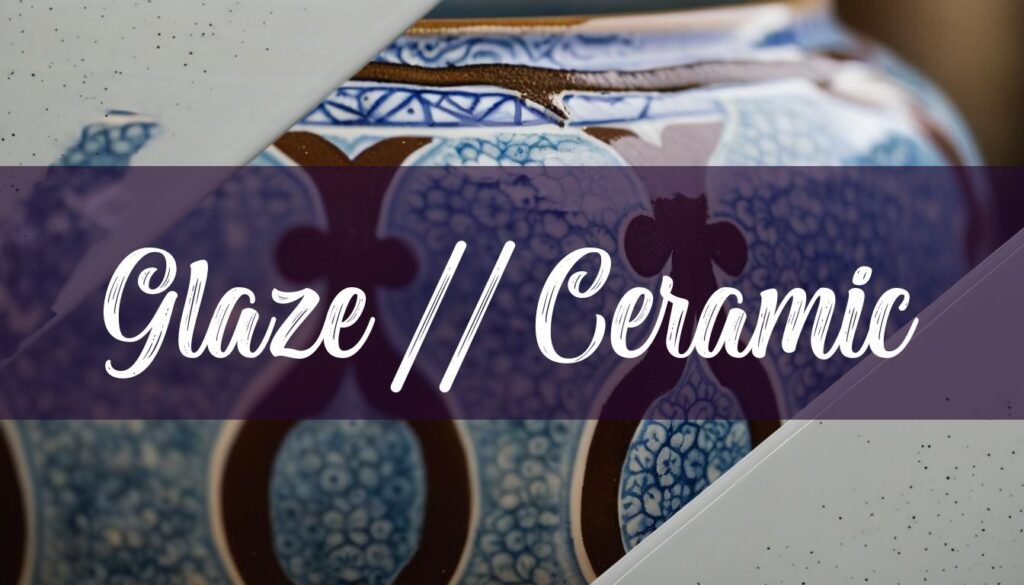Glazing a ceramic pot is a transformative process that not only enhances its visual appeal but also renders it impermeable and more durable. The glaze, essentially a glassy coating, offers a spectrum of finishes, colors, and textures, making it a pivotal step in ceramic creation. Whether you’re a beginner or an experienced potter, understanding the nuances of glazing can significantly elevate your craft. This guide will walk you through everything from selecting the right type of glaze to troubleshooting common issues, ensuring your ceramic pieces achieve a professional and captivating finish.
Different Types of Glazes and Their Properties
The world of ceramic glazes is vast and varied, offering options for every skill level and firing capability. Glazes are often categorized by their firing temperature, which include low fire, mid fire, and high fire glazes. Low fire glazes, typically fired between 1828°F (998°C) and 1945°F (1063°C), produce vibrant colors and are ideal for decorative pieces. Mid fire glazes, fired between 2167°F (1186°C) and 2262°F (1239°C), are commonly used for functional ware due to their increased durability. High fire glazes, fired between 2280°F (1249°C) and 2345°F (1285°C), are the most durable and are often used for stoneware and porcelain. Within these categories, glazes can be further distinguished by their appearance and composition. Clear glazes, for example, are transparent and highlight the underlying clay or decorations. Opaque glazes completely cover the clay surface, while luster glazes offer a pearly, iridescent finish. Specialty glazes like crackle, crawling, and crystalline glazes provide unique and artistic effects. For beginners, lead-free glazes are recommended due to their safety and wide range of colors. These glazes are environmentally friendly and can be used for food-safe products. You can also find inspiration for your next project in experimental glaze recipes.
Preparing Your Bisque-Fired Pot and Mixing Glaze
Before applying any glaze, proper preparation is essential. Start by ensuring your bisque-fired pot is clean and free of dust, oils, or any other contaminants. These can interfere with the glaze’s adhesion and result in an uneven finish. Wipe the pot down with a damp sponge to remove any loose particles. Next, prepare your glaze. Whether you’re using a commercial glaze or mixing your own, achieving the correct consistency is crucial. Glazes typically come in powder form and need to be mixed with water. Follow the manufacturer’s instructions for the correct ratio of glaze to water. The ideal consistency should be similar to that of heavy cream. If the glaze is too thick, it will be difficult to apply evenly; if it’s too thin, it may run during firing. Use a blender or a sieve to ensure the glaze is smooth and free of lumps. Sieving also helps to remove any impurities that may be present in the glaze powder. Allow the glaze to settle for a few minutes, then stir thoroughly before each application to maintain a consistent mixture.
Learn how to easily make your own plates at home with this helpful tutorial from Pottery to the People:
Glaze Application Techniques
There are several methods for applying glaze to a ceramic pot, each with its own advantages and best-use cases. Brushing is a common technique, particularly useful for intricate designs or small areas. Apply two to three even coats, allowing each coat to dry before applying the next. Dipping is another popular method, ideal for quickly and evenly coating larger pieces. Submerge the pot in the glaze for a few seconds, then remove it and allow the excess glaze to drip off. Pouring is a great technique for glazing the inside of vessels or creating unique, flowing patterns on the outside. Pour the glaze over the pot, tilting it to ensure even coverage, then pour off the excess. Spraying is a more advanced technique that requires specialized equipment, but it allows for very even and controlled application, especially useful for large or complex pieces. Regardless of the method you choose, ensure that you apply the glaze in a well-ventilated area and wear appropriate protective gear. A fun way to spice up your designs can be Sgraffito.
Safety Measures
Working with ceramic glazes involves handling materials that can be hazardous if not used properly. Always prioritize safety by taking the necessary precautions. Wear a HEPA filter mask when mixing dry glaze powders to prevent inhalation of harmful particles like silica. Use nitrile or latex gloves to protect your skin from irritation or allergic reactions. Safety glasses are also essential to prevent glaze splashes or powder from irritating your eyes. Ensure your work area is well-ventilated to minimize exposure to airborne particles and fumes. Do not eat, drink, or smoke in the glazing area to avoid accidental ingestion of glaze materials. Always wash your hands thoroughly after glazing. Be aware of the specific hazards associated with each glaze material you use. Consult Material Safety Data Sheets (MSDS) for detailed information on toxicity and safe handling instructions. If you’re using a spray booth, ensure it is properly vented and filtered, and dispose of used filters as toxic waste.
Firing Process and Potential Problems
The firing process is where the magic truly happens. As the kiln heats up, the glaze materials melt and fuse to the ceramic surface, creating a durable and visually appealing finish. Each glaze has a specific firing temperature range, and it’s crucial to adhere to this range to achieve the desired results. If the temperature is too low, the glaze may not fully melt and mature; if it’s too high, the glaze may run off the surface. Common problems encountered during firing include glaze runs, pinholes, crazing, and crawling. Glaze runs occur when the glaze becomes too fluid and drips down the pot. This can be prevented by applying the glaze in thinner layers or by adjusting the glaze recipe to increase its viscosity. Pinholes are small holes in the glaze surface, often caused by gases escaping during firing. Lengthening the firing cycle or adding more flux to the glaze can help to reduce pinholing. Crazing is a network of fine cracks in the glaze, caused by a mismatch in the thermal expansion rates of the glaze and the clay body. Adjusting the glaze or body composition to better match their thermal expansion rates can prevent crazing. Crawling occurs when the glaze pulls away from the clay surface during firing, leaving bare patches. This can be caused by applying the glaze too thickly or by the presence of dust or oils on the bisque-fired pot. Ensuring a clean surface and applying the glaze in even layers can help to prevent crawling.
Troubleshooting Tips
Even with careful preparation and application, glazing issues can arise. If you encounter crazing, try increasing the silica content in the glaze or decreasing the feldspar content. For crawling, ensure the bisque-fired pot is clean and free of dust, and consider adding a small amount of gum to the glaze batch to improve adhesion. If you’re experiencing pinholing, try lengthening the firing cycle or decreasing the content of zinc or rutile in the glaze. Blisters and blebs, which are usually the result of an excessively thick glaze application or incomplete clay preparation, can often be resolved by applying thinner layers of glaze or by using fritted materials.
Next Steps for Further Learning
Mastering the art of glazing takes time and practice. Experiment with different glazes, application techniques, and firing schedules to discover what works best for you. Take detailed notes on your processes and results to track your progress and identify areas for improvement. Consider joining a local pottery club or taking a workshop to learn from experienced potters and gain access to shared resources. There are also many online resources available, including forums, tutorials, and glaze recipe databases. By continuously learning and experimenting, you can refine your glazing skills and create truly stunning ceramic pieces.





